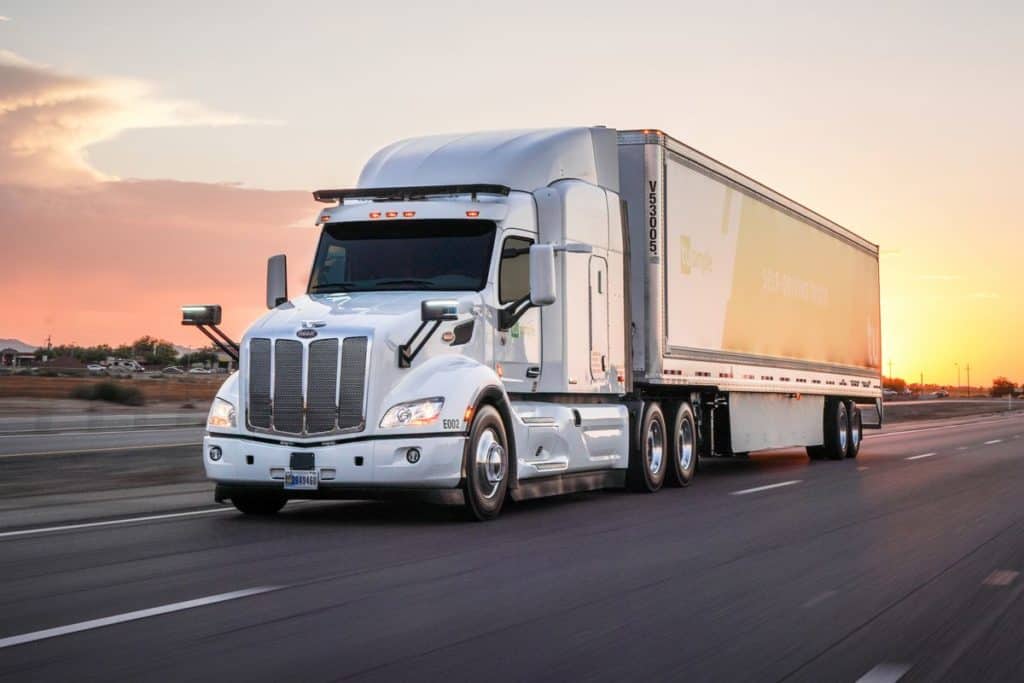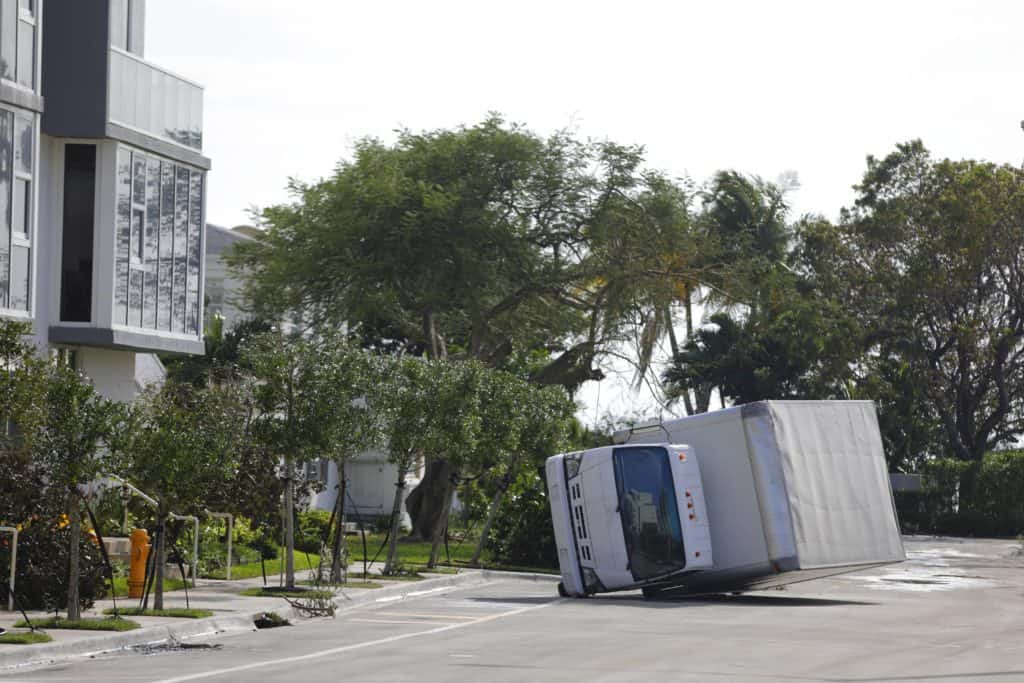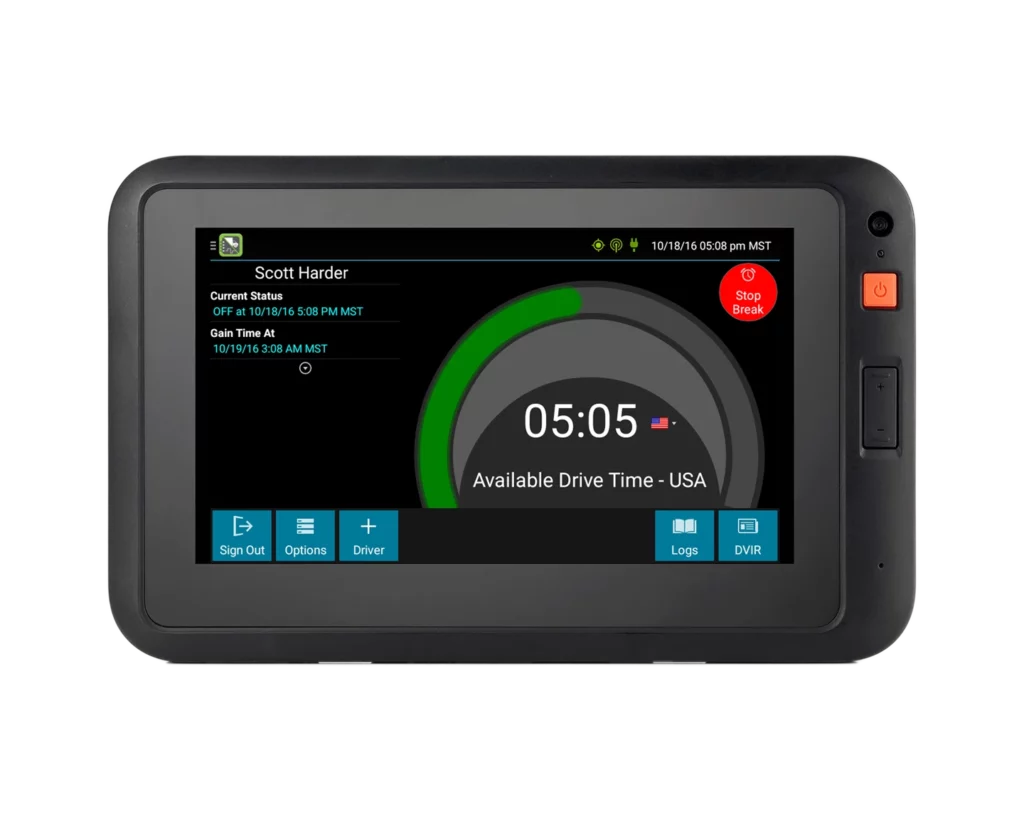Understanding the definitions of what a commercial motor vehicle is and what it’s not, along with the requirements associated with a CMV, is critical to ensure you’re following the FMCSA regulations for your fleet of vehicles. We’ll break down the differences between the two and the regulations.
What is a Commercial Motor Vehicle?
A CMV or commercial motor vehicle is operated for business or commercial use. A commercial motor vehicle should not be driven for personal reasons. Commercial motor vehicles are typically designed to carry passengers along with products or goods.
However, the definition isn’t so simple, especially in the United States. The FMCSA requires the motor vehicle to meet certain requirements, such as the gross vehicle weight.

What is Considered a Non-CMV?
A non-CMV means that the motor vehicle or combination of the motor vehicle does not match the definitions or requirements set by the Federal Motor Carrier Safety Administration or the U.S. Department of Transportation (DOT).
The spartacus workout buy tren online the ultimate functional fitness workout program
In other words, a non-commercial motor vehicle or non-motor carrier is a vehicle that is only used for transportation purposes and not used for commerce. For example, if a driver uses an SUV, van, or car for their family and uses it for private matters that aren’t intended for earning income.

Non-motor carriers won’t be used to transport merchandise, wares, services, or goods and can’t be subject to hire any drivers. In addition, these motor carriers can’t use any exterior advertising such as business names, addresses, lettering, signs, or magnets for business.
What are the requirements for a Commercial Motor Vehicle (CMV)?
The FMCSA classifies a commercial motor vehicle to be a towed or self-propelled motor vehicle utilized on a highway in interstate commerce to transport property or passengers.
- The vehicle must have a gross combination weight rating or gross vehicle weight rating of 26,001 pounds. In addition, the towed units for the commercial motor vehicle (CMV) must have a gross vehicle weight or gross vehicle weight rating of 10,000 pounds.
- The commercial motor vehicle is either used to transport or has the capacity to transport over 8 passengers for compensation purposes. Or it is used to transport over 15 passengers, including the driver, but not used to transport for compensation.
- The commercial motor vehicle has a trailer or bed and is used to transport a significant quantity of hazardous material.
Understanding which vehicle is categorized as a commercial motor vehicle is crucial because it means that the operator or owner must comply with certain regulations.
Driving a vehicle categorized as CMV without following the proper protocols, such as obtaining a commercial driver’s license, may lead to substantial legal trouble. There are many types of commercial motor vehicles, which include tow trucks, large trucks, vans, and buses.
In addition, there may be other types of CMV like delivery trucks, flatbed trucks, cement trucks, garbage trucks, and other vehicles that transport passengers for compensation.
Knowing the CMV definition is important for commercial vehicle operators because they will know whether or not these CMV requirements relate to their circumstances. These are some of the requirements and policies that commercial motor vehicle drivers should be aware of.
- CDL class, restrictions, endorsements
- CDL application, upgrade, transfer, and renewal
- Driver suspensions and notifications of conviction
- Drug and alcohol testing: (random, reasonable suspicion, pre-employment, post-accident, follow-up testing, and return-to-duty)
- Drug and alcohol prohibitions, record keeping, and policy.
Non-motor carriers won’t be used to transport merchandise, wares, services, or goods and can’t be subject to hire any drivers. In addition, these motor carriers can’t use any exterior advertising such as business names, addresses, lettering, signs, or magnets for business.
What are the different classifications of commercial motor vehicles?
When throwing out definitions for CMV, it’s important to note that commercial motor vehicles can be classified into eight different classes and divided into three categories which as: heavy-duty, medium-duty, and light-duty. A commercial motor vehicle (CMV) operated on highways and used to transport passengers, including the driver and products. In addition, the classification will be determined by the gross vehicle weight rating.

What is the Gross Vehicle Weight Rating?
The gross vehicle weight rating or GVWR is a part of the safety regulation and standard to prevent trucks from overloading.
This is designed to include the vehicle’s overall net weight or gross combination weight along with the cargo, fuel, drivers, and passengers. In totality, this number is the maximum weight that is safe for operation. It’s important to note that once the gross combination weight rating is determined by the car manufacturer, it cannot be changed.
The vehicle manufacturer will come up with the GVWR by factoring in the gross combination weight of the strongest weight-bearing components like the axles and its weaker components such as the tires, suspension, frame, and body.
These factors will determine the gross vehicle weight rating (GVWR), which determines the safety regulations that follow for each vehicle. In many cases, drives will need to acquire a single or combination of commercial motor vehicle licenses for compliance to drive the vehicle.
Below are the different classifications for commercial motor trucks.
Light Duty Trucks
The light-duty truck includes classes 1, 2, and 3 under the umbrella of commercial motor vehicle classification.
Class 1: This class of trucks has a gross vehicle weight of 0 to 2,722 kilograms or 0 to 6,000 pounds.
Class 2: In this class, these trucks have a gross vehicle weight between 2,722 to 4,536 kilograms or 6,001 to 10,000 pounds.
Class 3: In this class, trucks have a gross vehicle weight between 4,536 to 6,350 kilograms or 10,000 to 14,000 pounds.
Medium-Duty Trucks
Medium-duty trucks are categorized in classes 4, 5, and 6.
Class 4: This class of trucks has a gross combination weight between 6,351 to 7,257 kilograms or 14,001 to 16,000 pounds.
Class 5: This class of trucks has a gross combination weight range between 7,258 to 8,845 kilograms or 19,501 to 26,000 pounds.
Class 6: In class 6, these trucks have a gross combination weight between 8,846 to 11,793 kilograms or 19,501 to 26,000 pounds.
Heavy-Duty Trucks
The heavy-duty trucks in classes 7 and 8. Any person who operates heavy-duty trucks must adhere to proper driver qualifications to obtain a Class B commercial driving license (CDL).
Class 7: This class of trucks has a gross combination weight between 11,794 to 14,969 kilograms or 26,0001 to 33,000 pounds.
Class 8: The class 8 trucks have a gross combination weight of over 14,969 kilograms or 33,001 pounds. In addition, this weight does account for all tractor-trailers.

Types of Commercial Motor Vehicles
It’s also important to distinguish which group your motor carriers fall under. These are the three groups of commercial motor vehicles:
Commercial Motor Vehicle – Group A: When the motor carrier has a gross combination weight or gross combination weight rating of greater than 26,0001 pounds or 11,791 kilograms. In addition, they must also have a gross vehicle weight or gross vehicle rating of over 10,000 pounds.
Heavy Straight Vehicle (Group B): These motor carriers must have a gross vehicle weight or gross vehicle weight rating of over 26,001 pounds or 11,794 kilograms.
Small Vehicle (Group C): In this group of motor carriers, they do not meet the requirements or definitions of Group A or B. However, they are either designed used to transport 16 or more passengers, including the driver. Or the other scenario is that it is a motor carrier used to transport hazardous materials for interstate commerce.
What are the Commercial Driver’s License (CDL) Requirements?
In order to lawfully operate a commercial motor vehicle used to transport passengers, including the driver or goods, you’ll need a matching commercial driver’s license (CDL).
A commercial driver’s license (CDL) or otherwise known as CDL, is a special type of license that a driver can acquire after completing certain training and tests. A driver will need to pass the driving and written test to acquire their commercial driver’s license.
In addition, if you’re holding a commercial driver’s license, you’ll need to abide by specific guidelines and regulations designed for workplace safety and vehicle safety.
- Drivers must follow the hours of service regulations placed by the FMCSA.
- The driver must have a legal blood alcohol concentration limit of no more than 0.004%.
- Depending on the class of driver’s license, the driver is can only operate and drive their approved CMV.
- Depending on the specific driver’s license, the driver can only drive for intrastate or interstate commerce.
- The operators must have medical certification requirements.
Depending on your state’s regulations, some commercial motor vehicles will not mandate a need for a commercial driver’s license. For example, in Texas, the Department of Public Safety won’t demand specific types of commercial motor vehicles to obtain a CDL.
This includes motor vehicles such as farm vehicles, military vehicles, fire trucks, air-carrier owned vehicles, emergency vehicles, or recreational vehicles, where it is used to transport themselves and passengers for personal reasons.
CDL License Overview Based on Classes

There are three types of classes for CDL’s which are Class A, B, and C. Each has its own purposes and will clearly have a definition regarding what type of vehicles you may drive.
Class A CDL:
With a Class A CDL, you can operate any combination of commercial vehicles with a GVWR of 26,001 or more pounds. However, this is provided that the towed vehicle weighs more than 10,000 pounds.
Vehicles you’re allowed to drive: Tanker vehicles, flatbeds, livestock carriers, tractor-trailers which include 18-wheeler, big rig or semi, truck and trailer combination, and most class B and class C vehicles depending on the type of endorsement requirements.
Class B CDL:
With a Class B CDL, you can operate any single vehicle that is not hitched to a trailer. This means commercial trucks with a cargo area and attached cab with an overall combined weight of over 26,000 pounds, along with trucks with a detached towed cargo vehicle that is less than 10,000 pounds.
Vehicles you’re allowed to drive: large buses such as school buses, tourist buses, city buses, straight trucks, box trucks, segmented buses, dump trucks with smaller trailers, and some Class C vehicles assuming the right endorsements.
Class C CDL:
Obtaining a Class C CDL means that you can operate a vehicle with a GVWR under 26,001 pounds or a vehicle towing another under 10,000 pounds or able to transport 16 passengers or more.
Vehicles you’re allowed to drive: HazmMat vehicles, tank trucks, buses, trailers, and double or triple trailers.
Breaching the CMV Requirements Under the FMCSA
A commercial motor vehicle (CMV) is upheld to a much higher standard and must comply with many regulations compared to a personal vehicle. A CMV must follow federal regulations by the FMCSA and even special state laws.
If you’re an operator of a commercial motor vehicle (CMV), you’ll likely need to purchase special commercial vehicle insurance. In addition, a CMV needs to be within a range for its gross vehicle weight rating or gross combination weight.
Otherwise, they will be classified under a different class. Finally, operators must be aware that they are using a CMV. Otherwise, they could accidentally break certain rules and face legal ramifications such as hefty fines or even a driver’s license suspension.
If any commercial motor vehicle owner breaches the FMCSA or state rules, they could be in violation and guilty of negligence. This is because breaking CMV regulations means you are violating safety awareness, which could cause accidents and liable for damages.
In addition, the driver of the commercial motor vehicle (CMV) may have to pay fines to reimburse the victim for non-economic and economic damages. Depending on how the incident occurred, the liability of the commercial motor vehicle accident could be placed on the company, motor vehicle owner, or driver.
What are the CMV Requirement Exceptions?

Although the CMV requirements are strict and drivers must follow the letter of the law, there are some exceptions. These exceptions may be found for drivers of firetrucks and military vehicles.
Understanding the full CMV definition and knowing what you need to comply with and how you need to comply with these regulations can be confusing. We recommend asking your employer or your state’s transportation department for more information regarding compliance, documents for the requirements, and even best practices for operating your CMV.
What are the Federal Motor Carrier Safety Regulations for CMVs?
If a motor vehicle is used to transport passengers, including the driver, along with other assets for business purposes and has a gross combination weight rating of over 10,0001 pounds, then it’s subject to safety regulations under the Federal Motor Carrier Safety Administration.
All drivers must follow all workplace safety regulations, medical examinations, and hours of service rules. In addition, vehicles over this gross combination weight rating must also stop at their state weight and inspection stations
A driver won’t need any type of CDL to drive a commercial motor vehicle in class 1 through class 6. However, motor carriers used to transport for interstate commerce that has a gross combination weight rating of over 10,0001 pounds must be identified with their UDSTnumber and their name of the company.
You should always for compliance with any recent safety regulations, rules, and laws through the U.S. Department of Transportation (DOT) and the local transportation and state authorities.
For motor carriers outside of the United States, you’ll need to check with their DOT or transportation authority to see the best practices and regulations to operate a commercial motor carrier.
Regulatory Requirements
All commercial vehicles used to transport passengers, including the driver in interstate commerce, is subject to compliance under the FMCSA. Most fleets that only operate in the business of a single state will automatically assume that they do not need to be in compliance with the rules of interstate commerce; however, that isn’t true.
Commercial vehicles that do not operate with interstate commerce are still regulated by the individual state’s DOT. Therefore, you should also check with your state DOT along with FMCSA and the motor vehicle regulatory agencies within your state to identify the regulations that you must be in compliance with. The three main types of regulations that you need to look for are:
- Interstate commerce
- Intrastate commerce
- Commercial motor vehicles
Interstate Commerce
The FMCSA has a few definitions for this, including:
- From one state to another or going to a foreign country
- Between two places in a single state through another state or a place outside of the U.S.
- Between two places within a state for commerce
Intrastate Commerce
The FMCSA had made their definition of intrastate commerce as any transportation, traffic, or trade-in any state of the United States that isn’t described as interstate commerce.
General Requirements and Regulations for CMV and CMV/CDL Vehicles
If your vehicle is classified as a CMV, you are subject to be in compliance with the regulations by the FMCSA and DOT unless it fits under these definitions of an exception.
Hours of Service
The FMCSA created a safety compliance program that restricts the number of available hours commercial vehicle drivers can be working and driving in a given day/week. Not having accurate records of driver logs can result in serious fines from the DOT.
Exceptions
So many exceptions and nuances come with the hours of service regulations to accommodate various emergency conditions that may come up. Also, some special exceptions are depending on the type of commercial vehicles, such as pickup trucks or states such as Alaska and Hawaii. It’s important to familiarize yourself with the regulations placed by the FMCSA and how they may apply to your situation.
Driver’s Record
The FMCSA also has requirements and protocols for drivers to update their own logbooks or company admins to update their drivers’ records regularly. These are documents that log the number of hours that the driver is on and off-duty.
In addition, some requirements state the retention of these records. You’ll need to verify with the FMCSA to identify the specific state regulations and potential application exceptions.
Identification of Commercial Motor Vehicles
Per request from the FMCSA, all self-propelled or tow-unit commercial vehicles must have identification. The information may include things such as the color of markings, location, shape, and rented CMV’s.
And, of course, all of these vehicles must have registration. For more information or if you have questions about this, you’ll need to visit the FMCSA government website.
Registration Requirements
Fleet companies that offer interstate for-hire transportation must acquire federal operating authority by filing the correct documents and information to the FMCSA. Private motor carriers and for-hire carriers need to acquire a DOT number and must register with the FMCSA.
This unique ID number is displayed on all commercial vehicles of the fleet that the motor carrier operates.
Under the Unified Carrier Registration Act, fleet organizations operating commercial motor vehicles for interstate commerce may also be subject to pay fees and register.
In addition, for intrastate motor carriers, over 30 states require that these organizations obtain a U.S. Dot number during the vehicle registration process. They may also be subject to compliance with the International Registration Plan and International Fuel Tax Agreement (IFTA).
What is a CMV Accident?
According to the Federal Motor Carrier Safety Administration or FMCSA, about 415,000 crashes were reported which involved commercial vehicles in the U.S. during 2015. Of these accidents, 22% or 3,852 resulted in fatalities.
And about 60% of these commercial vehicle accidents happened on rural roads, while 25% of them happened on urban interstate highways. Also, roughly 35% of fatal accidents of commercial vehicle accidents occurred during the late hours of the night between 6 p.m. to 6 a.m.
Causes of Commercial Vehicle Accidents

As drivers, the CMV crashes are usually caused by negligence, mistakes, and errors. Knowing these mistakes will provide safety awareness to all individual commercial drivers. The most common causes of crashes include:
- The driver is unfamiliar with any roadway problems.
- Vehicles suffer from poor maintenance and have a brake problem.
- The driver has used an over-the-counter drug.
- The driver was traveling too fast based on the conditions on the road.
- There are environmental or severe weather problems.
- Drivers can be fatigued from driving too long.
- The driver felt pressure from their carrier or supplier to rush and speed faster than they should.
- The vehicle was following too close.
- The vehicle faced a cargo shift.
- The commercial vehicle had tire problems.
Considering all the potential factors that cause commercial vehicle accidents, it’s more likely that the drivers themselves are the cause of the crash rather than the conditions they drive or the vehicles they drive.
As a result, even if manufacturers create more safety features and the government constructs better roadways, the single biggest improvement needs to come from the individual.
That’s why regulations in place such as vehicle inspection, the hour of service rules, workplace safety, and driver training need to occur.
Best Practices for Commercial Vehicle Drivers
To ensure the health and safety of your passengers, including the driver and the vehicles around you, it’s best to follow these best practices when operating a CMV.
- Drivers and all passengers should wear their seat belt.
- All drivers should avoid cell phone use while operating their vehicles.
- Drivers should always be aware of the surrounding road conditions and speed limits.
- Drivers should avoid any use of drugs and alcohol.
- The vehicle should slow down for any curves or turns.
- Drivers should also maintain a proper stopping distance.
Conclusion
Owning a fleet of commercial vehicles is rewarding but can be quite confusing with the regulations. There are many regulations involved in classifying the type of CMV, and along with that comes many more regulations and requirements needed.
If you have questions, you can always reach out to your local DOT, FMCSA, and FMCSRS for the most up-to-date information. Following these guidelines will ensure you won’t face severe penalties like fines or license suspensions.
We’ve hope you’ve found our guide helpful in understanding all the in’s and out’s of a CMV.

